To be fair, yellowing isn’t always a bad thing.
For instance: when the bananas in my pantry turn a bright shade of yellow, I know they’ve reached ripe deliciousness.
Or when my macaroni turns yellow as I add that delectably cheesy powder, it’s a sign that an entire box of Kraft mac ‘n’ cheese is about to put me in a blissful food coma.
However, when it comes to birds of paradise, yellowing is a bit of a problem… especially since species of Strelitzia are evergreen.
Unlike deciduous plants, they don’t go through leaf senescence in preparation for a dormant season, so any yellow foliage on a bird of paradise signifies a health issue of some kind.
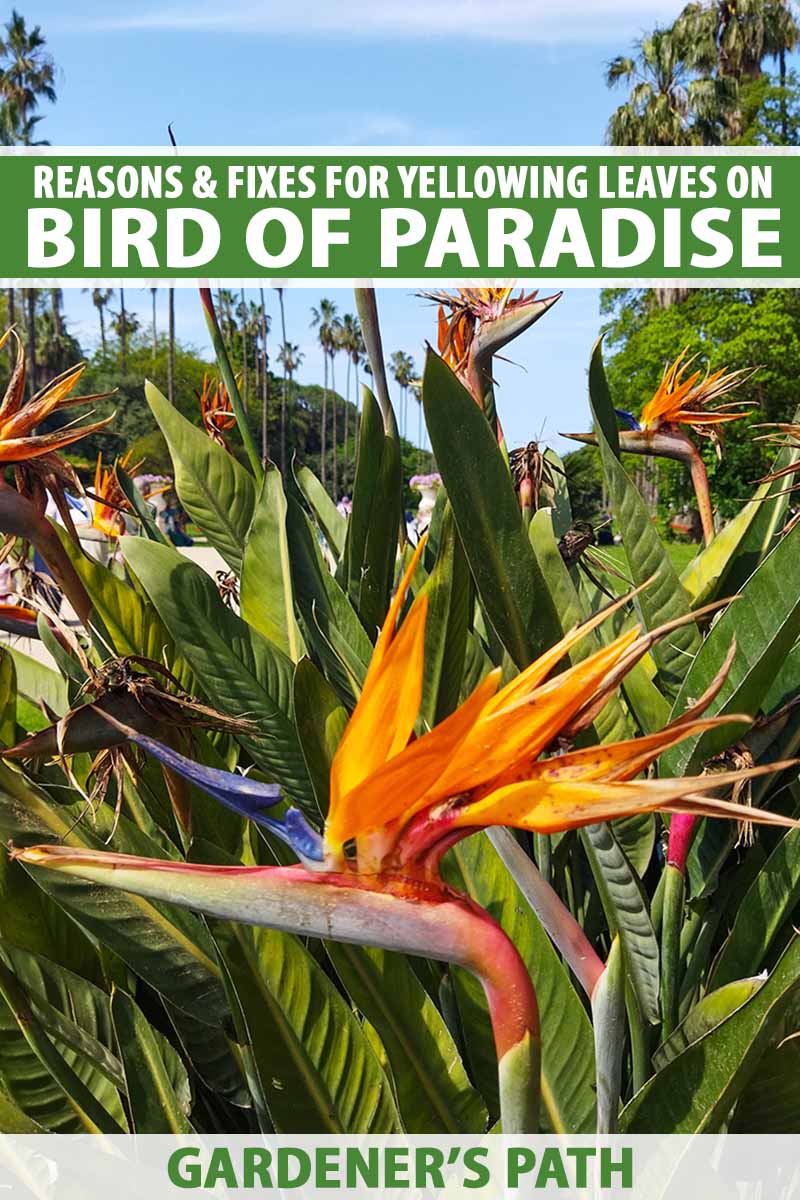
We link to vendors to help you find relevant products. If you buy from one of our links, we may earn a commission.
Despite how sickly they may seem, discolored Strelitzia leaves are no reason to panic.
With some prior knowledge of what can cause yellowed bird of paradise foliage and the steps you can take to solve it, the fear of an unknown complication is replaced with reassurance.
If you know what’s going on and what you’re doing, you can solve the problem.
That’s the goal of this guide: to give you the ability to deal with a yellowing Strelitzia on your own. We’ll go over possible causes of a bird of paradise’s yellow foliage, along with some solutions!
Here’s everything we’ll cover, up ahead:
11 Common Causes of Yellowing Strelitzia Leaves
A case of yellowing Strelitzia can have many different, simultaneous causes – or just one. Let’s take a look at the most common culprits!
1. Climate Stress
Much like the parent of an overheated, loudly-complaining child during summer vacation, a bird of paradise can undergo stress when the surrounding climate is less than ideal. For this plant, that stress can manifest as yellowing leaves.

For outdoor growing, these species need to be planted in USDA Hardiness Zones 9 to 12. These plants also need humidity like you’ll find in the tropics or subtropics – arid areas are too dry.
For indoor growing, these plants require daytime temperatures in the 70 to 75°F range, and cooler nighttime temperatures of 50 to 55°F.
They’ll also need around 60 percent humidity, so be sure to provide that with supplemental misting if necessary, especially in the colder months.
2. Disease
Many different plant diseases are evidenced by a common symptom: leaf chlorosis. As such, sickness may very well be the culprit.
Proper Strelitzia cultivation and sterile gardening practices are essential for preventing infection. But if you already see signs of disease-driven foliar yellowing, you’ll need to diagnose the exact condition.
For help on this, Google isn’t a bad option… heck, that may be how you found this very guide.
But sometimes, visiting a search engine to see what’s wrong with a plant is like using WebMD to find out what’s causing a headache: you might conclude it’s the wrong affliction and stress out over nothing.
This is where consulting experts at extension agents or plant pathology specialists can come in handy – their expertise is invaluable, especially for the amateur gardener.
Need a primer on bird of paradise disease? Our guide can help.
Once you’ve figured out what’s going on, implement sickness-specific solutions accordingly. If your bird of paradise makes a full recovery, expect that green lushness to return – just not in any foliage that is already discolored.
3. Improper Exposure
Birds of paradise require full sun or partial shade in order to grow, which is a fairly wide range of exposures. And that only leaves one exposure type left where they won’t thrive: full shade.
In full shade, a bird of paradise struggles. And such a struggle can leave a Strelitzia with – you guessed it – yellow leaves.
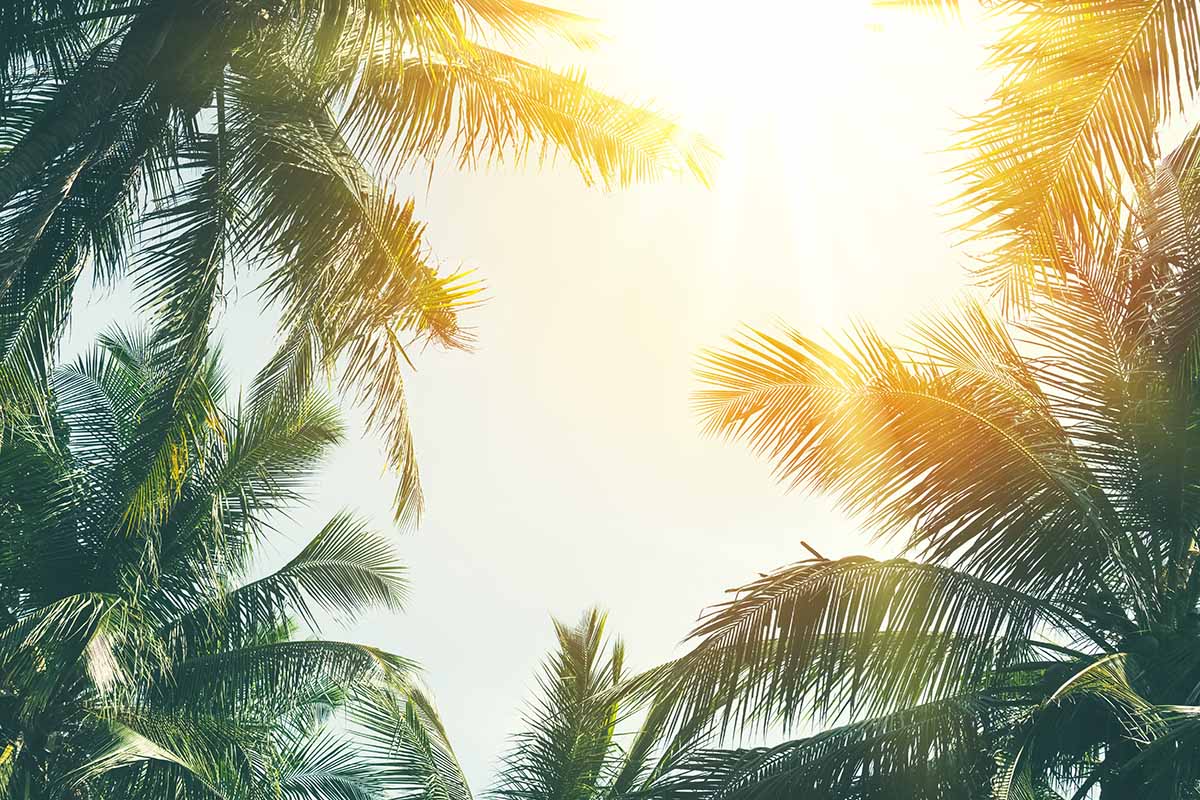
Remedying this is a pretty simple fix – just provide more light!
Outside, this is more dependent on location than anything else. You just might have to transplant it away from the shade of nearby buildings, or out from under a dense canopy, but the work of doing so is definitely worth it for long-term plant health.
When a potted Strelitzia is growing indoors, it needs at least eight hours of bright sun exposure through a nearby window in order to thrive.
If that’s not possible, some well-placed LEDs intended for growing plants will provide ample light.
For such a light fixture, head to The Home Depot.
Read more in our guide to grow lights for plants.
4. Improper Irrigation
A bird of paradise’s foliage is a lot like going number one: if it’s yellow, then there’s dehydration afoot. But unlike answering that particular call of nature, Strelitzia leaves can also change from green to a more lemony hue due to overhydration.
A bird of paradise needs more water than, say, a cactus. But it’s also drought-tolerant, so it can’t just sit in water without any adverse effects.
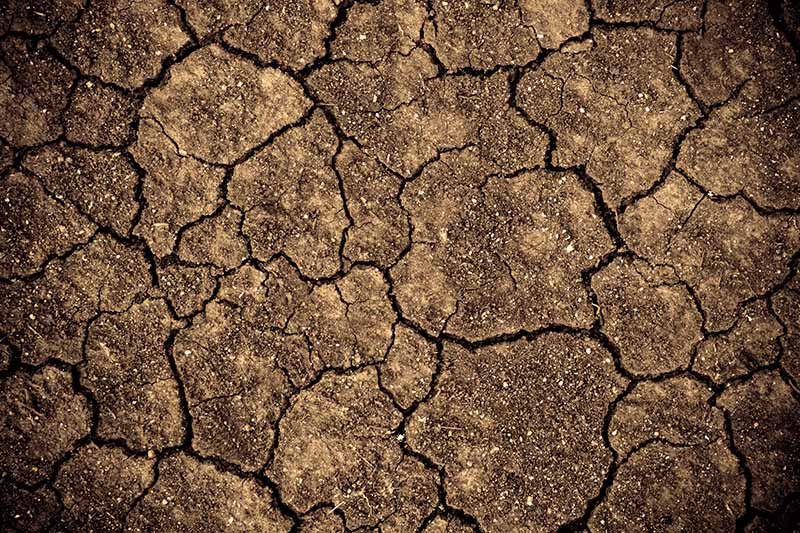
Proper watering is the way to solve this one. Water whenever the top two to three inches of soil are dry – no more, no less.
In addition, hard water that’s high in minerals like calcium and fluoride can injure the roots and cause leaf yellowing.
A solution to this is to use rainwater or distilled water, but I suppose this technically falls under the umbrella of our next topic, so read on!
5. Improper Nutrition
When I say nutrition here, I’m referring chiefly to plant macronutrients: nitrogen, phosphorus, and potassium.
But proper nutrition also includes micronutrients like boron, zinc, and iron. And all of these minerals have Goldilocks-eque requirements in plants: not too much, not too little, but an amount that’s just right.
It’s worth getting a test done – your local extension office should offer soil testing services, which are a valuable way of knowing the nutritional makeup of your soil.
From there, there are many different fertilizers and soil amendments available which can dramatically alter the nutritional content and bioavailability of these elements in your garden.
Read our guide to learn more about testing soil.
6. Improper Soil
Thankfully, a bird of paradise doesn’t demand a narrow range of very specific soil qualities in order to be healthy.
However, soil that drains poorly, that’s devoid of nutrients, and/or that’s ridiculously acidic or alkaline won’t do a Strelitzia any favors, and will most likely lead to yellow foliage.
To best avoid sickly leaves caused by improper soil, aim for an optimal growing medium. For a bird of paradise, this need to be well-draining, fertile, and loamy-textured, with a pH in the range of 5.5 to 7.5.

A great product for testing a soil’s pH – along with its levels of nitrogen, phosphorus, and potassium – is offered by Luster Leaf on Amazon.
7. Old Age
Any old dude with a trick knee or bad back can tell you that things start to break down and might not work as well as they used to as you age. This is true for plants, too.
As a plant nears the end of its life, a stressor that it probably would’ve tolerated in its youth can end up causing health issues. So for a Strelitzia, yellowing leaves can occur more easily with each passing day.
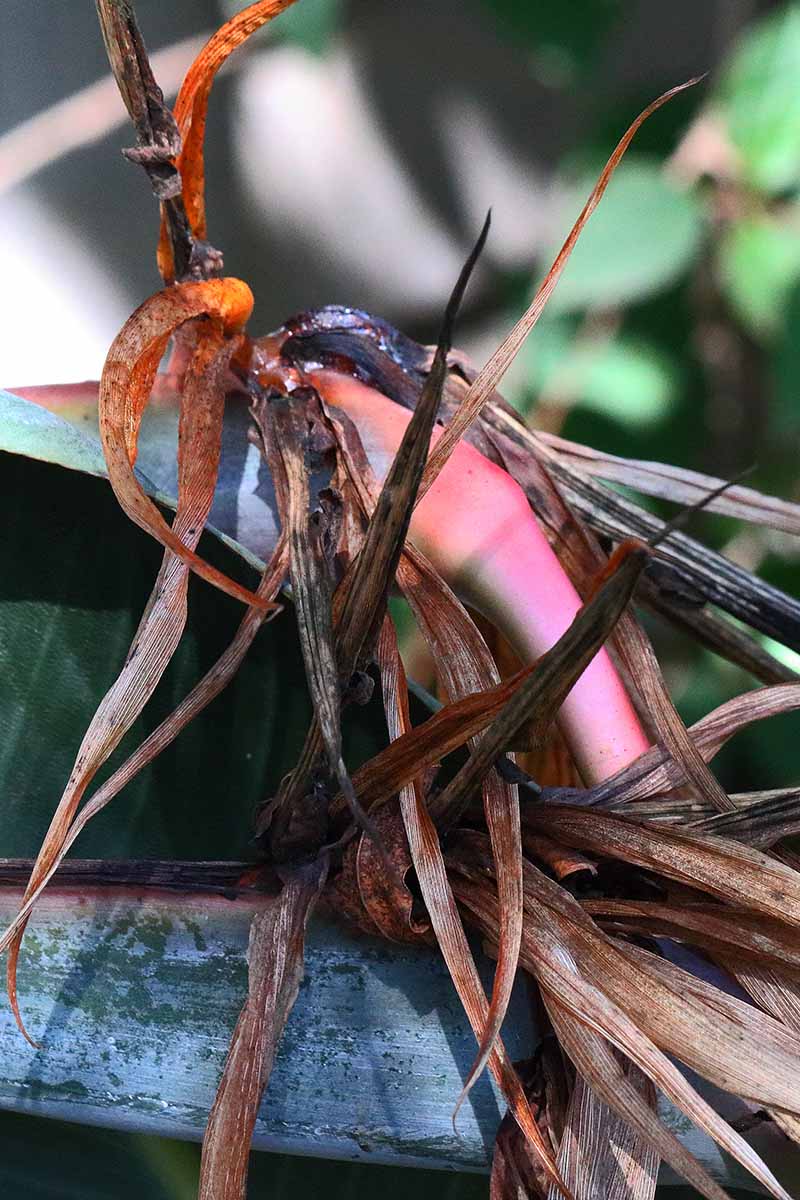
Unless you’ve managed to solve aging, there’s nothing to be done about this. All you can do with a bird of paradise is increase your vigilance as it gets older, and lower your expectations of what it can withstand.
For an elderly plant that keeps having problems, you might have to put it out to pasture… which can be done literally if you have your compost pile out in a field somewhere.
Alternatively, you can divide an older plant. These divisions will respond to the stress of division with new and rejuvenated growth! Luckily, we’ve got a guide to dividing Strelitzia available so you can learn the basics.
8. Pests
When insects or arachnids infest a bird of paradise, they stress the plant much like diseases can, and symptoms of this stress can include yellowing foliage.
Since a healthy plant can better withstand an infestation, cultivating a Strelitzia properly and utilizing sanitary practices in the garden are the main forms of prevention.
In addition, you can deter pests with beneficial insects. Encourage their presence in your garden by growing a variety of diverse, pollen- and nectar-producing plants.
But be sure to avoid systemic herbicides, since these can wipe out the friendly bugs along with the ones you want to kill.
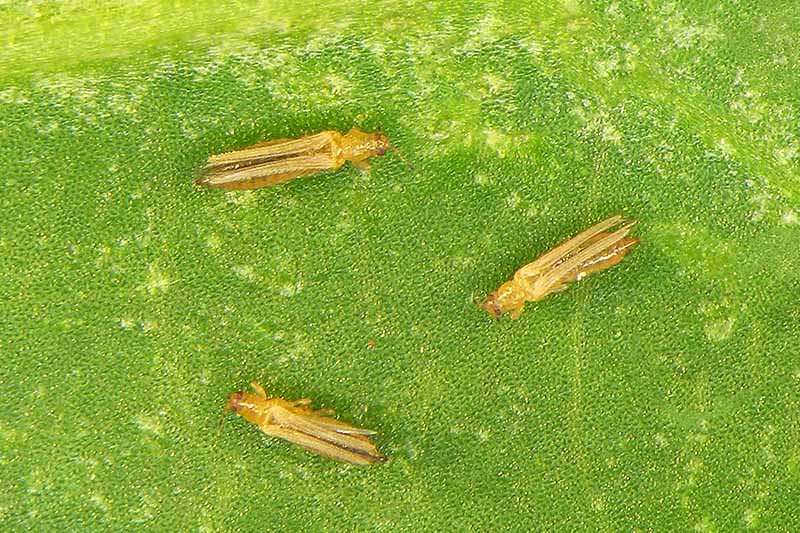
Frequently checking your plants for creepy-crawlies is a good idea. Spotting pests early on makes them easier to manage, and a speedy detection ensures that minor damage won’t become a larger problem right under your nose.
If you’ve noticed some pests, you’ll need to identify them before you can effectively eliminate them.
For a list of common Strelitzia pests and ways to combat them, refer to our guide on the subject.
9. Structural Damage
Whether it’s a hurricane, misused tools, or a runaway lawnmower, random external forces can cause some serious physical harm to a bird of paradise.
For instance: damaged roots and stems can’t entirely support the foliage, which is a significant stressor. And this can lead to yellowing leaves.
There’s not much anyone can do to change the weather or stop a natural disaster, but human error can definitely be controlled. “Measure twice, cut once,” and all that jazz. Be mindful of your actions around these plants!
And definitely turn off the engine every time if you leave your lawn care equipment unattended.
10. Too Much Pruning
Don’t get me wrong, pruning can definitely be a healthy practice. But it’s important to remember that any amount of pruning is stressful to a plant.
Infrequent and moderate doses of precise pruning stress a plant in a good way, stimulating the production of newer, more vigorous shoots.
But when a gardener prunes with reckless abandon and takes off the majority of the greenery in one go, this can cause severe plant shock and result in yellow foliage.
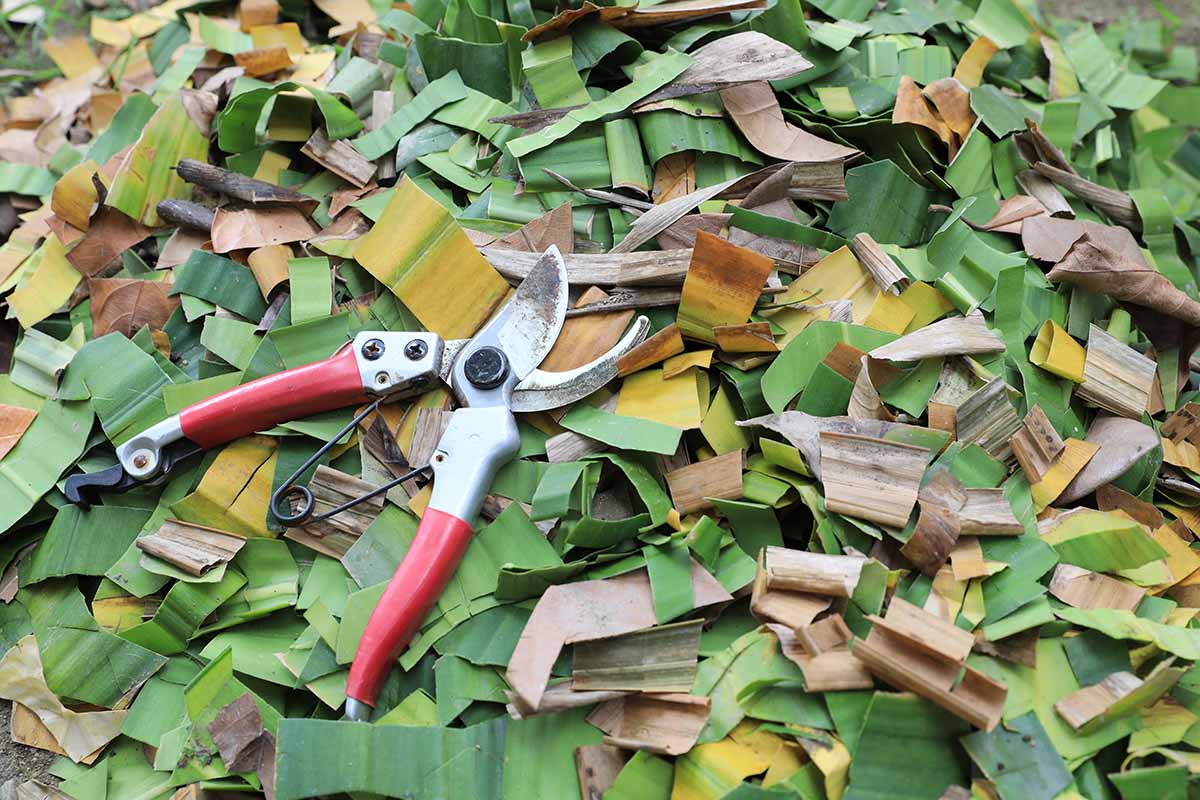
To avoid this, don’t take off more than a third of a Strelitzia’s leafy growth at once.
Dead or diseased shoots can be snipped whenever you happen to notice them, but dedicated pruning sessions should be an annual thing, preferably done in early spring.
For the specifics on bird of paradise pruning, we’ve got you covered in our guide.
11. Transplant Stress
When you literally uproot a bird of paradise and put it somewhere else, that’s a pretty big stressor. And it’s stressful enough to cause leaf yellowing – especially if you clip the roots and prune the shoots prior to transplanting.
This can also occur indoors, because a Strelitzia doesn’t even have to leave its growing medium to feel that transplant stress.
If you purchased a potted one from a nursery and moved it into your living room, that in itself can be a stressful, leaf-yellowing experience for the plant.
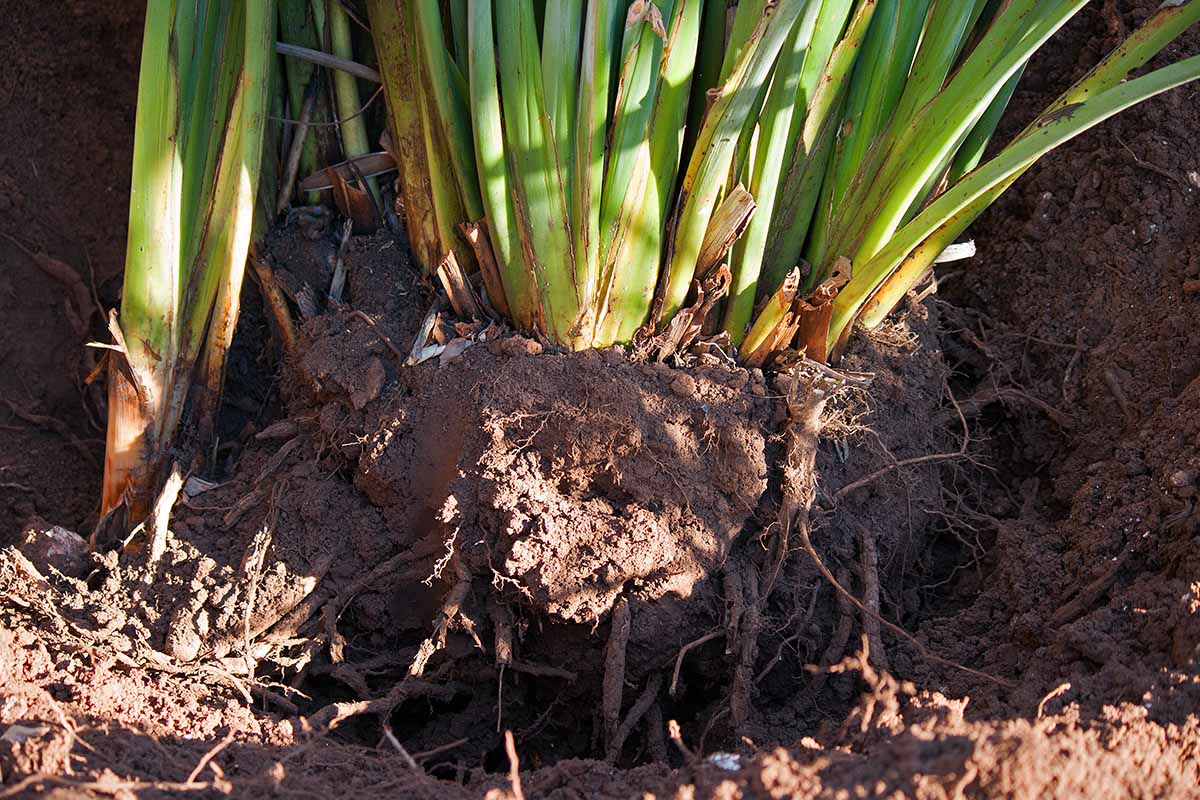
It’s like if you moved an athlete from a professional training facility into a typical college fraternity house. Both the athlete and the bird of paradise used to have the ideal conditions and nutrition to thrive readily available.
But now that they’re in the “real world” – where everything doesn’t revolve around their health and performance – their fitness level might drop some.
The athlete may gain a few pounds and lose some strength after a few months of enjoying ice-cold brewskis with the boys. For a bird of paradise plant, some yellowing leaves might appear as it becomes established in its new surroundings.
For outdoor transplanting, you’ll want to wet a Strelitzia’s root zone beforehand so it’s not dehydrated when you dig it out. For indoor transplants, try your best to replicate the conditions found in its old environment wherever you’re putting it now.
Honestly, this may be the least worrying entry on the list. Some stress is normal for a plant when it’s transplanted into a new environment, so don’t worry too much. If a couple of leaves turn yellow, feel free to cut ‘em off.
Don’t Get Mellow If Leaves Turn Yellow
Cheer up, folks! Yellowing bird of paradise leaves are nothing to be glum about.
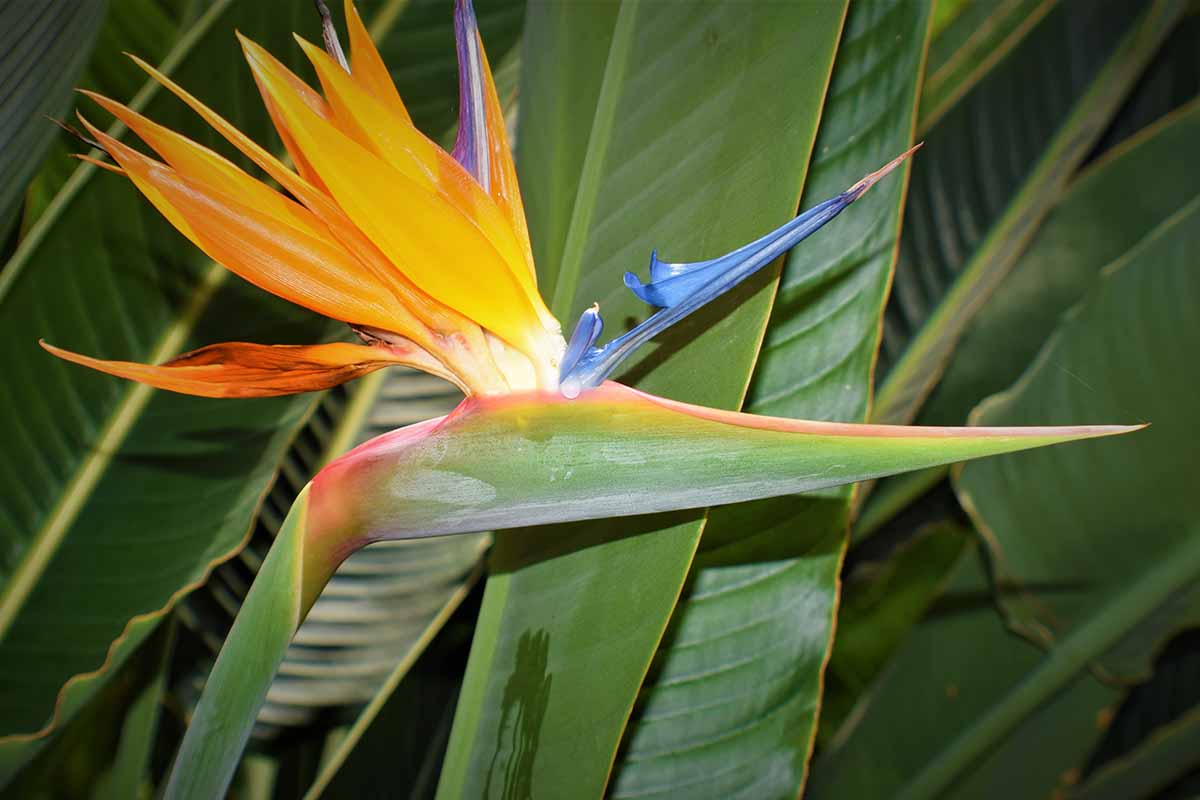
Yes, they can be indicative of a larger issue. But now you have the know-how to diagnose and treat them, so yellow Strelitzia foliage is but a speed bump on the way to that lush greenness you’ve grown to love!
Questions? Remarks? All that and more can go in the comments section below.
Looking for even more bird of paradise guides? Ask, and you shall receive:

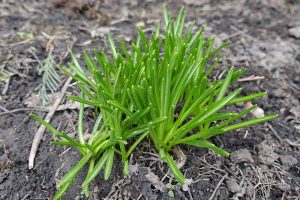
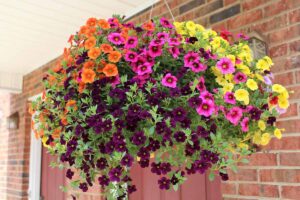

Hello,
Thanks for this beautiful guide..
I have this plant in the picture. I saw that it started to get yellowish in the lowest leaves… I read your guide and I believe I overwatered it.. Now I put it outside to let the soil dry fast. Do you think the yellowish will stop at this point? Or it will continue increasing?
Hello, Yamen! I’m glad you enjoyed the guide!
If overwatering was the only cause of the leaf yellowing, then proper irrigation from here on out should prevent the yellowing from increasing or spreading to new leaves.
But unless the chlorosis was caused by a nutritional deficiency, it’s unlikely that the affected leaves will fully recover their full green color. If the yellowing is significant and/or an eyesore that you’d like to be rid of, then feel free to refer to our guide on pruning a bird of paradise… it should help you out some!
Good luck!